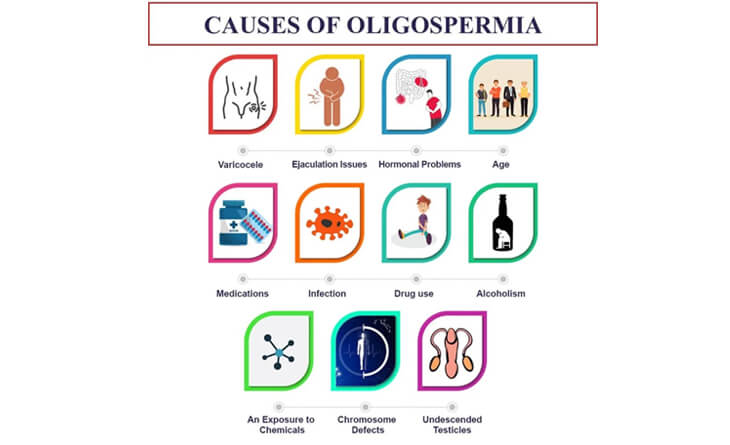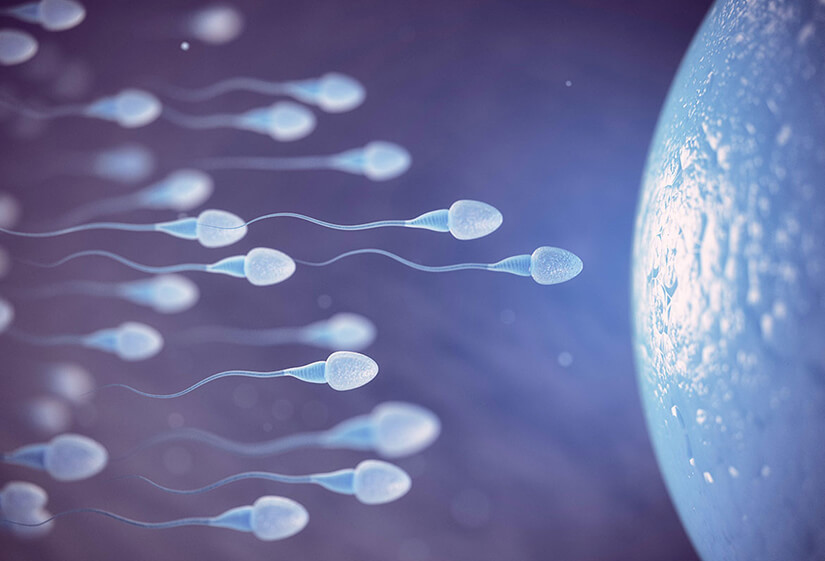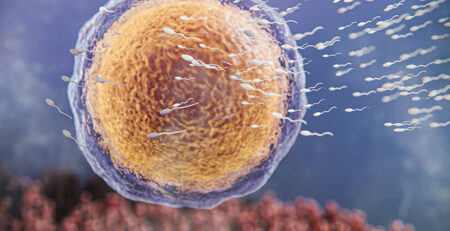Difference Between Azoospermia and Oligospermia
When we talk about male infertility, two medical terms are most commonly used: Azoospermia and Oligospermia. In simple words, azoospermia means the complete absence of sperm in the semen sample, whereas oligospermia is a low sperm count.
Heard of them? Or want to know more? Keep reading!
According to the WHO manual, a normal sperm count is 16 million sperm per millilitre or higher.
However, if your semen sample contains less than 16 million sperm, it is considered a low sperm count – the condition is called Oligospermia.
Sometimes there could be a nil sperm count too, due to various reasons – the condition is called Azoospermia.
Both conditions can make it difficult for a man to conceive.
Therefore, oligospermia and azoospermia treatment are required.
To identify the condition accurately, and make the right treatment decision, basic understanding of the problems is required. Read on to get clarity on both kinds of male infertility conditions.

Azoospermia
Let us start with azoospermia and its causes.
Azoospermia is a medical condition where men have no sperm in their semen. It affects about 1% of all men and can be caused by various factors. There are two main types of azoospermia:
- Obstructive Azoospermia
- Non-obstructive Azoospermia
Obstructive Azoospermia: Obstructive azoospermia is characterized by blockage in the reproductive tract that prevents sperm from entering the ejaculate. Even though the testicles produce sperm, the blockage prevents it from exiting the body. The blockage can occur anywhere along the path sperm take from the testes to the penis, including the epididymis, vas deferens, ejaculatory duct, and urethra. It can be caused by various factors, and understanding these factors can help find the right male infertility treatment.
- Epididymis Blockages: The epididymis is a long, coiled tube that sits on the back of each testicle and is responsible for storing and maturing sperm. Blockage of the epididymis causes epididymitis, which prevents sperm from travelling from the testicles to the vas deferens, the tube that carries sperm to the urethra and out through penis. Several conditions can block epididymis, like infection, inflammation or scrotal trauma.
- Blockage in the Vas Deferens: The vas deferens is a tube that carries sperm from the testicles to the urethra. If there is a blockage in the vas deferens, sperm cannot travel out of the body and ejaculate. The reasons for blockage in the vas deferens include trauma or injury, cystic fibrosis or congenital disabilities. The doctor may recommend surgical sperm retrieval for this azoospermia treatment.
- Vasectomy: A vasectomy is a surgical procedure to sterilize men. It involves cutting or tying the vas deferens, the tubes that carry sperm from the testicles to the penis. Vasectomy is a very effective form of contraception and it causes obstructive azoospermia.
- Genetic Conditions: Some rare genetic disorders like cystic fibrosis can cause either a blockage or abnormal development of the male reproductive system.
The good news is, you can consult the IVF specialist in Delhi for treatment of obstructive azoospermia and get on the correct path, soon.
Non-obstructive Azoospermia: Non-obstructive azoospermia (NOA) is another type of azoospermia in which sperm are not produced in the testicles. It is the most common type, accounting for about 60% of all cases. The causes of non-obstructive azoospermia may include:
- Genetic Conditions: Some men are born with genetic conditions that can cause non-obstructive azoospermia. Normally, men have 46 chromosomes, with 22 pairs and one X and one Y chromosome. However, up to 10% of men with non-obstructive azoospermia (infertility due to problems with sperm production) have detectable chromosomal abnormalities. For example, in Klinefelter syndrome, a man has two or more X chromosomes instead of one X with one Y chromosome. Klinefelter syndrome is the most common genetic cause of Non-obstructive azoospermia. Your doctor will assess your condition to tailor the azoospermia treatment.
- Y Chromosome Microdeletion: The Y chromosome is one of the sex chromosomes and contains genes important for male sex development and sperm production. If you have a Y-chromosome microdeletion in a region that contains genes important for sperm production, you may develop nonobstructive azoospermia. This means that his testicles will not be able to produce sperm or will only be able to produce very few sperm.
- Hormonal Imbalance: Hormonal imbalance can also affect sperm production. The possible causes of hormonal imbalance may include hypogonadism, hyperprolactinemia or thyroid disorder. Depending on the existing hormone level, your doctor may prescribe the best male infertility treatment.
- Exposure to Radiation and Toxins: Exposure to radiation during cancer treatment or medical imaging tests and toxins such as heavy metals, chemotherapy drugs and industrial chemicals can cause nonobstructive azoospermia because they can damage the testicles and sperm cells, which can lead to a decrease in sperm production or even non-obstructive azoospermia.
False Report
Now this one is really a hazardous one, especially when the sperm count is fine with the male. A false report of a semen analysis can also incorrectly indicate that there are no sperm in the ejaculate. This can happen for several reasons, including:
- Errors in the collection or processing of the sperm sample.
- Laboratory problems.
- Inadequate sample volume.
This makes it even more important to consult an experienced infertility specialist practising at a well-equipped facility with trained staff, for correct semen analysis and most effective male infertility treatment.

Oligospermia
Now, let’s move to the next part, called oligospermia.
Oligospermia means that a man’s semen contains fewer sperm than a fertile man’s semen. This can make it difficult for a man to get his partner pregnant.
Oligospermia can be classified into three categories:
- Mild Oligospermia
- Moderate Oligospermia
- Severe Oligospermia
Mild Oligospermia: Sperm count is between 10 million and 16 million sperm per millilitre of semen.
Moderate Oligospermia: Sperm count is between 5 million and 10 million sperm per millilitre of semen.
Severe Oligospermia: Sperm count is less than 5 million sperm per millilitre of semen.
Causes: Oligospermia can occur due to various reasons including:

Varicocele: Varicoceles are enlarged veins in the scrotum that can disrupt blood flow to the testicles and increase their temperature, which can negatively impact sperm production. About 40% of men with low sperm count or poor sperm quality have varicocele. Your doctor may prescribe surgical intervention for this male infertility treatment.
Infection: Infections, such as inflammation of the epididymis (epididymitis) or testicles and viruses, can reduce sperm production. Sexually transmitted diseases (STIs) such as gonorrhea can also cause low sperm count.
Ejaculation Issues: Ejaculation issues like retrograde ejaculation, in which semen enters the bladder instead of leaving from the tip of the penis, can cause oligospermia. This can happen due to bladder surgery or certain medical conditions, such as diabetes or spinal cord injuries.
Lack of ejaculation is another ejaculation problem that can lead to oligospermia. This can occur due to a medical issue, such as erectile dysfunction or premature ejaculation, or due to certain medications.
Hormonal Issues: Sperm production is controlled by a complex system of hormones, including testosterone, follicle-stimulating hormone (FSH), and luteinizing hormone (LH). If any of these hormones are out of balance, it can cause a low sperm count or other sperm problems.
Medications: Certain medications like beta blockers, antibiotics, cancer medications, certain antidepressants and long-term use of anabolic steroids can cause low sperm count. Limit the use of these medications for male infertility treatment.
Chromosome Defects: Some genetic disorders, such as Klinefelter syndrome, Kallmann syndrome, and Kartagener syndrome, can cause abnormal development of the male reproductive organs, resulting in low sperm count.
Exposure to Heat: The testicles work best at a temperature slightly below body temperature. Sitting for long periods, putting laptops on your lap, and wearing tight clothing can all cause the testicles to overheat. Overheating the testicles can temporarily reduce sperm production.
Exposure to Industrial Chemicals: Extensive exposure to industrial chemicals like pesticides, herbicides, or solvents like benzene and toluene can also reduce sperm production.
Exposure to Metals: Prolonged exposure to heavy metals such as lead, cadmium, and mercury leads to oligospermia (low sperm count).
Exposure to Radiations: If you are exposed to radiation for medical reasons, such as radiation therapy for cancer or ultrasound or magnetic resonance imaging (MRI), you are at increased risk of oligospermia. You are also at increased risk if you work in jobs that expose them to radiation, such as nuclear power plant workers and X-ray technicians.
Drug Use: Anabolic steroids are synthetic hormones that are similar to testosterone. Athletes and bodybuilders often use them to improve their performance and physique. However, anabolic steroids can shrink the testicles and reduce sperm production. Other drugs like cocaine and marijuana can also lower sperm count and quality.
Smoking and Alcohol Use: Smoking and alcohol consumption are both known to damage sperm cells and disrupt hormone production. This can lead to a decrease in sperm count and quality and a reduction in sperm motility. Limit the alcohol consumption for male infertility treatment.
Emotional Stress: Severe emotional stress can also lead to low sperm count. When stressed, your body releases stress hormones, such as cortisol. Cortisol can interfere with the production of testosterone, which is essential for sperm production.

Weight Problem: Being overweight or obese can reduce sperm count and lower the number of sperm produced by your body. It can also disrupt hormone production, which is essential for sperm production.
Sperm Testing Issues: Sperm counts can be lower than normal if the sample was taken too soon after ejaculation, too soon after an illness or stressful event, or if some semen was spilled during collection. For this reason, doctors usually test at least 2 samples over some time.
So that was the detailed account of both kinds of male infertility conditions and insights into their reasons and symptoms. Now that you are fully equipped with the knowledge, you can be more aware and educated while going through infertility treatment.
Here’s a Quick Recap Before We Go…
Azoospermia and oligospermia are two medical conditions that can affect male fertility. Azoospermia is the complete absence of sperm in the semen, while oligospermia is a low sperm count. Both conditions can make it difficult or impossible to conceive naturally.
If you are concerned about your fertility, you should immediately see an experienced fertility specialist like Dr. Rhythm Gupta for a semen analysis and other tests to determine if you have azoospermia or oligospermia and for oligospermia and azoospermia treatment.
All the best for your treatment journey.




